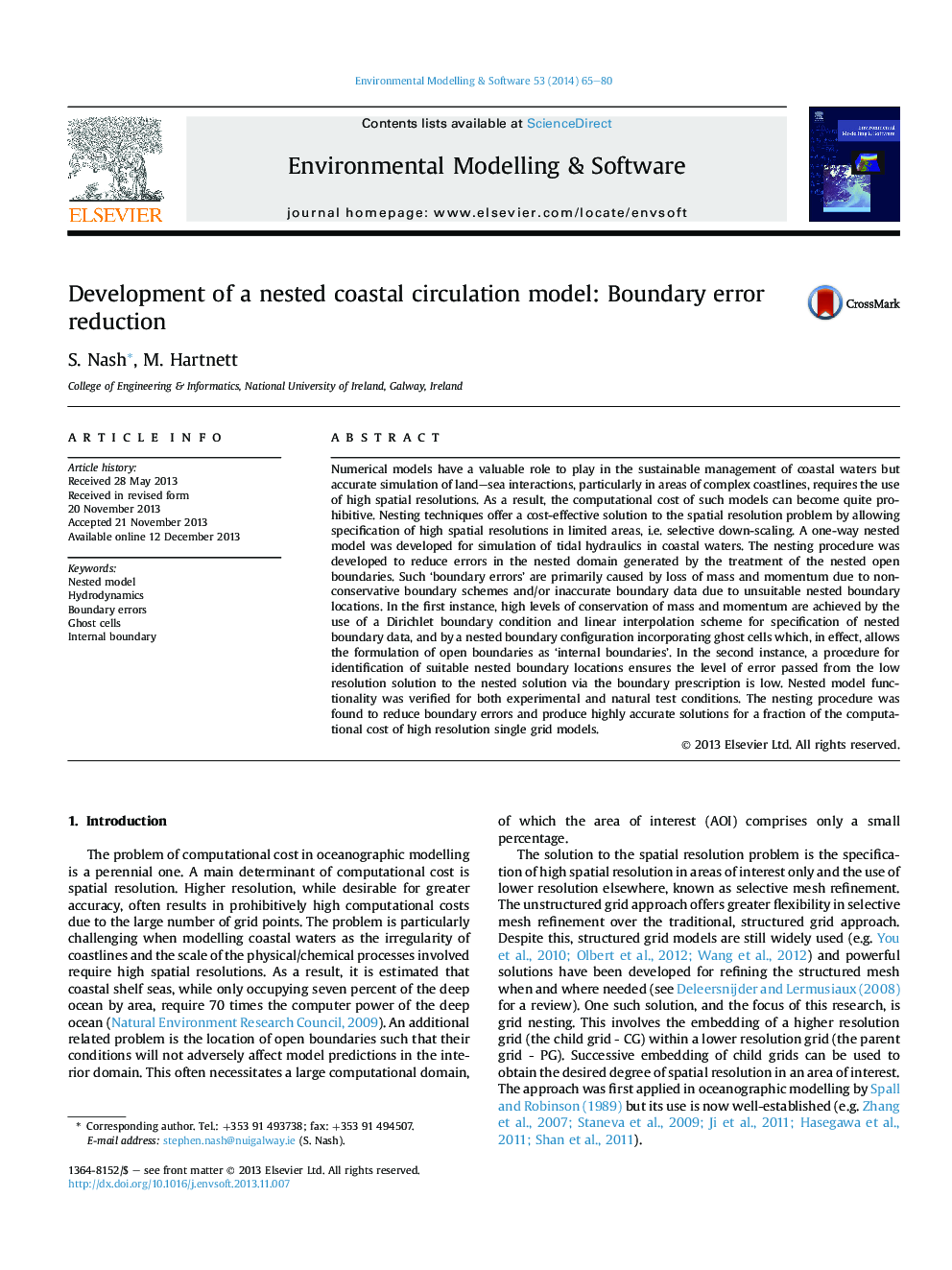| کد مقاله | کد نشریه | سال انتشار | مقاله انگلیسی | نسخه تمام متن |
|---|---|---|---|---|
| 6963940 | 1452297 | 2014 | 16 صفحه PDF | دانلود رایگان |
عنوان انگلیسی مقاله ISI
Development of a nested coastal circulation model: Boundary error reduction
ترجمه فارسی عنوان
توسعه یک مدل گردش خون ساحلی: کاهش خطا مرزی
دانلود مقاله + سفارش ترجمه
دانلود مقاله ISI انگلیسی
رایگان برای ایرانیان
کلمات کلیدی
مدل مستهجن، هیدرودینامیک، خطاهای مرزی، سلول روح، مرز داخلی،
ترجمه چکیده
مدل های عددی نقش قابل توجهی در مدیریت پایدار آبهای ساحلی ایفا می کنند، اما شبیه سازی دقیق از تعاملات دریایی و دریا، به ویژه در مناطق ساحلی پیچیده، مستلزم استفاده از قطعنامه های فضایی بالایی است. در نتیجه، هزینه محاسباتی چنین مدل ها می تواند کاملا غیر قابل پیش بینی باشد. تکنیک های لانه سازی یک راه حل مقرون به صرفه برای حل مسئله ی فضایی را با اجازه دادن به مشخص کردن قطعنامه های فضایی بالا در مناطق محدود، به شمول مقیاس بندی انتخابی، ارائه می دهند. یک مدل توپی یک طرفه برای شبیهسازی هیدرولیکی جزر و مد در آبهای ساحلی توسعه داده شد. روش تسریع برای کاهش خطاهای موجود در دامنه توزیع ایجاد شده توسط درمان مرزهای توافق شده توزیع شده توسعه داده شد. چنین خطاهای مرزی عمدتا ناشی از از دست دادن توده و حرکت به علت طرح های مرزی غیر محافظه کار و / یا داده های مرزی نادرست به علت مکان های نامناسب مرزی است. در مرحله اول، سطح بالایی از حفاظت از جرم و حرکت با استفاده از شرایط مرزی دیریکله و طرح درونیابی خطی برای مشخص کردن داده های مرز تو در توافق حاصل می شود و با پیکربندی مرز توافق شده با استفاده از سلول های شبح، که در واقع اجازه می دهد تا تشکیل مرزهای باز به عنوان "مرزهای داخلی". در مرحله دوم، یک روش برای شناسایی مکان های مرزی مناسب توافق شده تضمین می کند که سطح خطای انتقال یافته از راه حل با وضوح پایین به راه حل توزیع شده از طریق نسخه مرزی کم است. عملکرد مدل مستهجن برای هر دو شرایط آزمایشی و آزمایش طبیعی تایید شد. روش لایه بندی برای کاهش اشتباهات مرزی و ارائه راه حل های بسیار دقیق برای کسری از هزینه های محاسباتی از مدل های یکپارچه با وضوح بالا پیدا شد.
موضوعات مرتبط
مهندسی و علوم پایه
مهندسی کامپیوتر
نرم افزار
چکیده انگلیسی
Numerical models have a valuable role to play in the sustainable management of coastal waters but accurate simulation of land-sea interactions, particularly in areas of complex coastlines, requires the use of high spatial resolutions. As a result, the computational cost of such models can become quite prohibitive. Nesting techniques offer a cost-effective solution to the spatial resolution problem by allowing specification of high spatial resolutions in limited areas, i.e. selective down-scaling. A one-way nested model was developed for simulation of tidal hydraulics in coastal waters. The nesting procedure was developed to reduce errors in the nested domain generated by the treatment of the nested open boundaries. Such 'boundary errors' are primarily caused by loss of mass and momentum due to non-conservative boundary schemes and/or inaccurate boundary data due to unsuitable nested boundary locations. In the first instance, high levels of conservation of mass and momentum are achieved by the use of a Dirichlet boundary condition and linear interpolation scheme for specification of nested boundary data, and by a nested boundary configuration incorporating ghost cells which, in effect, allows the formulation of open boundaries as 'internal boundaries'. In the second instance, a procedure for identification of suitable nested boundary locations ensures the level of error passed from the low resolution solution to the nested solution via the boundary prescription is low. Nested model functionality was verified for both experimental and natural test conditions. The nesting procedure was found to reduce boundary errors and produce highly accurate solutions for a fraction of the computational cost of high resolution single grid models.
ناشر
Database: Elsevier - ScienceDirect (ساینس دایرکت)
Journal: Environmental Modelling & Software - Volume 53, March 2014, Pages 65-80
Journal: Environmental Modelling & Software - Volume 53, March 2014, Pages 65-80
نویسندگان
S. Nash, M. Hartnett,
